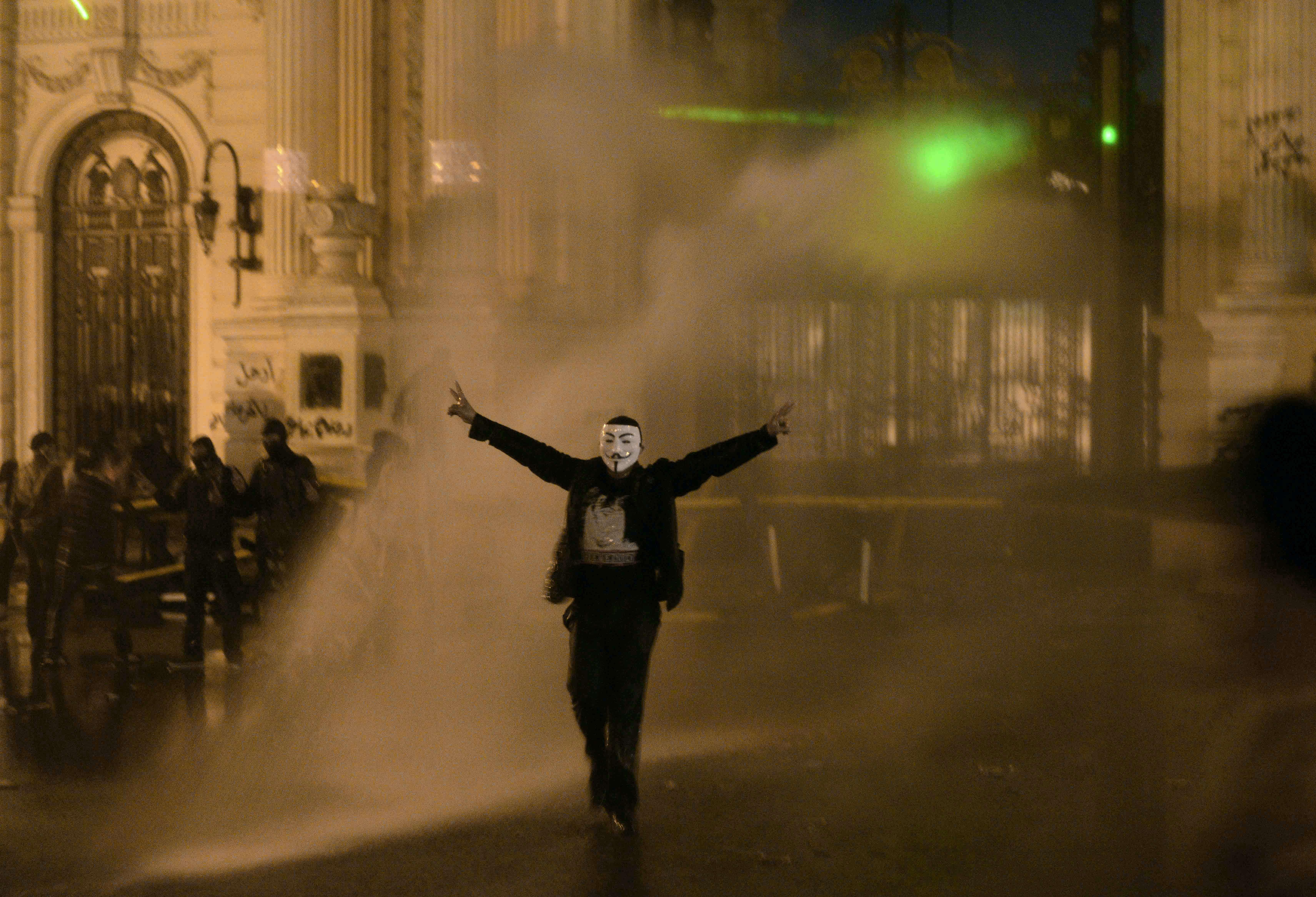
(Photo by Elizabeth Stuart)
Screaming, yelling and swearing. “Leave her alone,” a police officer called as he pushed through the throngs of people in Tahrir Square last week, trying to get the naked, blood-covered girl away from the group of men who had stripped, beaten and raped her during a celebration of the new president’s inauguration. Desperately, he raised his gun to disperse crowds of people watching the attack.
Between November 2012 and January 2014, more than 250 women have been sexually assaulted at public protests or celebrations, while hordes of people stood by. Whether would-be rescuers are apathetic or fear being attacked themselves, experts say it’s common for victims in these situations, surrounded by people, to face the attack alone.
The context of harassment affects the bystanders’ responses, said Farah Shash, a psychologist at Al-Nadim Centre for Human Rights. Research suggests that people are less likely to intervene in an emergency if there are other bystanders, Shash said. The bigger the crowd, the less likely people are to intervene.
“People tell themselves someone else will intervene, but not me,” Shash said. Fears of armed attacks or random arrest push the bystanders to “save themselves the trouble.”
This could explain why people often don’t intervene during mob harassment or assaults at cinemas, parks and metro stations during national holidays, such as Eid or Sham Al-Nessim, she said. But last week’s mob assault was a special case.
“The attack was 100% organised,” she said. The victim was surrounded by two circles; an inner circle of attackers and an outer circle resisting any attempt to rescue her. “Some people said that if they were there, they would not have intervened because of their fear of being randomly arrested.”
In violent attacks like this, some bystanders join the attackers instead of intervening, said Noora Flinkmann, communications manager at Harassmap, a local nonprofit that is working to change social attitudes toward sexual harassment and assault in Egypt. Many “claim that they were helping”, but were actually just helping the situation to escalate.
“The attack wouldn’t have happened in the first place, if they were helping,” she said.
Flinkmann said mob assaults are “an extreme form” of a broader sexual harassment epidemic in Egypt.
Sexual harassment, which is sometimes referred to as ‘flirtation’ or mo’aksa, is so common in Egypt that it has almost become socially acceptable, she said. Ninety-nine percent of Egyptian women have experienced some form of sexual harassment, according to a 2014 study from the United Nations Entity for Gender Equality and the Empowerment of Women. About 97% reported harassment in the form of touching.
“It is a kind of a social norm to not do anything about it,” she said.
She suggests that more people would intervene “even verbally” if there was “some form of social consequence” for harassment.
A few days before the incident happened in Tahrir, former president Adly Mansour issued a decree amending the penal code to officially name “sexual harassment” a crime punishable by up to five years of prison and/or a fine up top 50,000 Egyptian pounds. However, according to the United Nations, only 1.1% of women harassed report harrassment to the police.
This incident is the latest in a long list of mob sexual assaults in Egypt.
Nineteen women were sexually assaulted by a group of men on the second anniversary of 25 January revolution. In 2012, Yasmine El-Baramawy, a thirty year-old-musician, was pinned naked to the hood of a car and driven around Tahrir square while attackers took pictures of her and laughed. Journalist Nawal Ali was attacked on her way to an English class that was scheduled at the same time as an Anti-Mubarak protest in May 2005.


